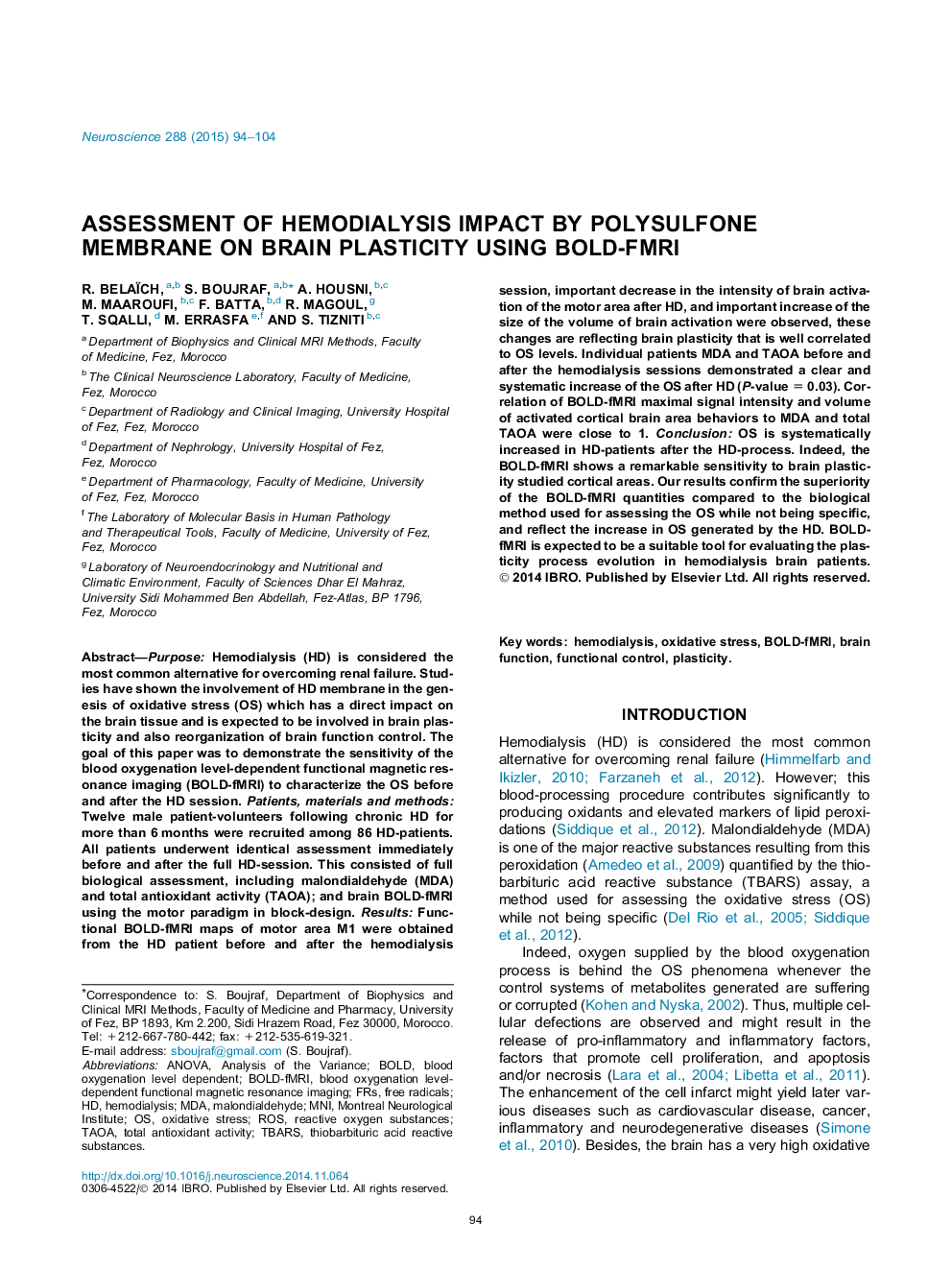| کد مقاله | کد نشریه | سال انتشار | مقاله انگلیسی | نسخه تمام متن |
|---|---|---|---|---|
| 4337504 | 1614788 | 2015 | 11 صفحه PDF | دانلود رایگان |
عنوان انگلیسی مقاله ISI
Assessment of hemodialysis impact by Polysulfone membrane on brain plasticity using BOLD-fMRI
دانلود مقاله + سفارش ترجمه
دانلود مقاله ISI انگلیسی
رایگان برای ایرانیان
کلمات کلیدی
MDATBARSBOLD-fMRIFRSBOLDMNIROS - ROSanalysis of the variance - تجزیه و تحلیل واریانسANOVA - تحلیل واریانس Analysis of varianceOxidative stress - تنش اکسیداتیوFree radicals - رادیکال آزادblood oxygenation level dependent - سطح اکسیژن خون وابسته استBrain function - عملکرد مغزTotal antioxidant activity - فعالیت کل آنتیاکسیدانیmalondialdehyde - مالون دی آلدهیدReactive oxygen substances - مواد اکسیژن واکنشیthiobarbituric acid reactive substances - مواد واکنش پذیر اسید تیوباربیتوریکMontreal Neurological Institute - موسسه عصبی مونترالHemodialysis - همودیالیزPlasticity - پلاستیک
موضوعات مرتبط
علوم زیستی و بیوفناوری
علم عصب شناسی
علوم اعصاب (عمومی)
پیش نمایش صفحه اول مقاله

چکیده انگلیسی
Purpose: Hemodialysis (HD) is considered the most common alternative for overcoming renal failure. Studies have shown the involvement of HD membrane in the genesis of oxidative stress (OS) which has a direct impact on the brain tissue and is expected to be involved in brain plasticity and also reorganization of brain function control. The goal of this paper was to demonstrate the sensitivity of the blood oxygenation level-dependent functional magnetic resonance imaging (BOLD-fMRI) to characterize the OS before and after the HD session. Patients, materials and methods: Twelve male patient-volunteers following chronic HD for more than 6 months were recruited among 86 HD-patients. All patients underwent identical assessment immediately before and after the full HD-session. This consisted of full biological assessment, including malondialdehyde (MDA) and total antioxidant activity (TAOA); and brain BOLD-fMRI using the motor paradigm in block-design. Results: Functional BOLD-fMRI maps of motor area M1 were obtained from the HD patient before and after the hemodialysis session, important decrease in the intensity of brain activation of the motor area after HD, and important increase of the size of the volume of brain activation were observed, these changes are reflecting brain plasticity that is well correlated to OS levels. Individual patients MDA and TAOA before and after the hemodialysis sessions demonstrated a clear and systematic increase of the OS after HD (P-value = 0.03). Correlation of BOLD-fMRI maximal signal intensity and volume of activated cortical brain area behaviors to MDA and total TAOA were close to 1. Conclusion: OS is systematically increased in HD-patients after the HD-process. Indeed, the BOLD-fMRI shows a remarkable sensitivity to brain plasticity studied cortical areas. Our results confirm the superiority of the BOLD-fMRI quantities compared to the biological method used for assessing the OS while not being specific, and reflect the increase in OS generated by the HD. BOLD-fMRI is expected to be a suitable tool for evaluating the plasticity process evolution in hemodialysis brain patients.
ناشر
Database: Elsevier - ScienceDirect (ساینس دایرکت)
Journal: Neuroscience - Volume 288, 12 March 2015, Pages 94-104
Journal: Neuroscience - Volume 288, 12 March 2015, Pages 94-104
نویسندگان
R. Belaïch, S. Boujraf, A. Housni, M. Maaroufi, F. Batta, R. Magoul, T. Sqalli, M. Errasfa, S. Tizniti,